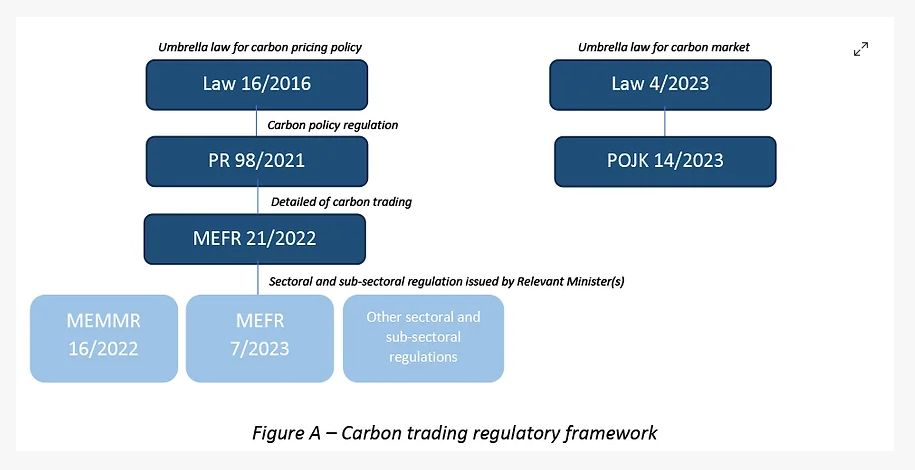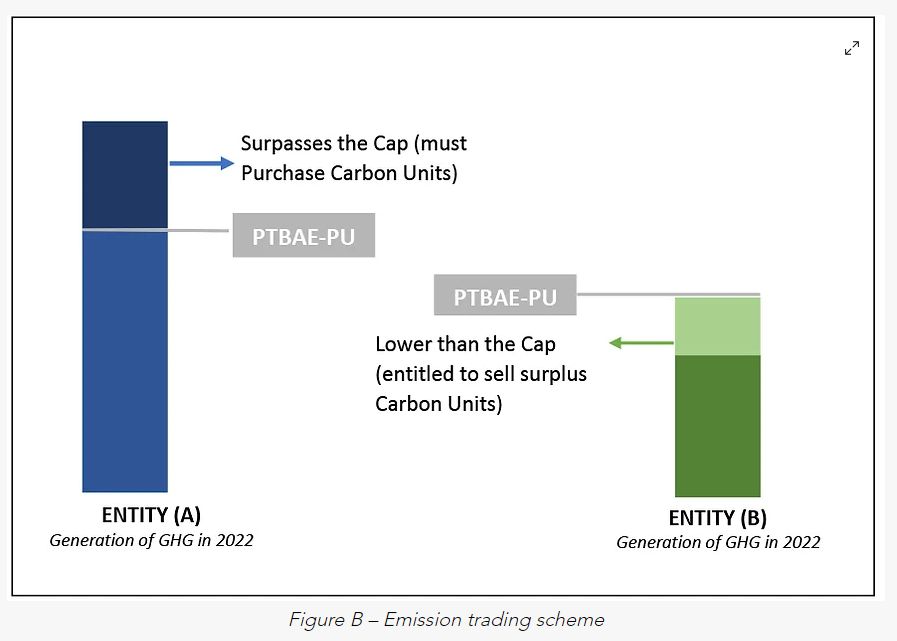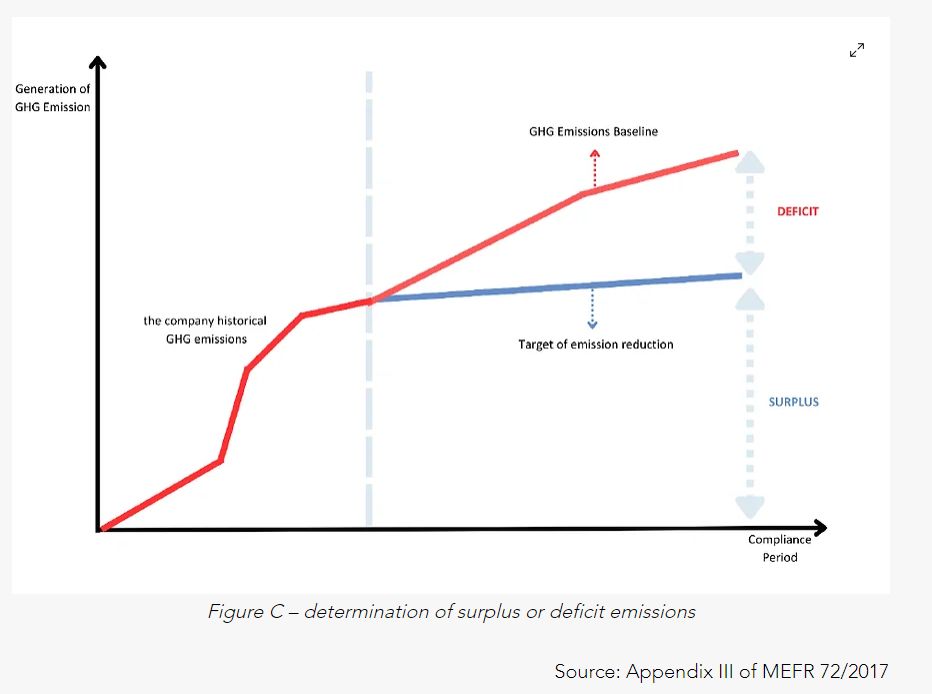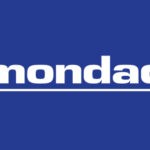BACKGROUND
Countries worldwide have been progressively pivoting towards the
implementation of international agreements relating to climate
change, such as the Kyoto Protocol (1997), Paris Agreement (2015),
and Glasgow Climate Pact (2021) that were initiated within the
framework of the United Nations Framework Convention on Climate
Change (“UNFCCC”), with the objective of mitigating the
impact of climate change. As climate change continues to
accelerate, driven primarily by the increasing levels of Greenhouse
Gases (“GHG”)1 in the atmosphere, the global
community recognizes the urgent need to mitigate the negative
effect of climate change through GHG reduction.
Indonesia, as a participant in the UNFCCC, has endorsed both the
Kyoto Protocol and Paris Agreement. These international commitments
were formalized through Law Number 17 of 2004 and Law Number 16 of
2016, respectively. In line with these ratifications, Indonesia is
committed to contribute to achieving the international goal to
limit the rise in global average temperature to below 20C above
pre-industrial levels and continuing efforts to suppress the
temperature rise within 1.50C above pre-industrial levels (called
the Nationally Determined Contribution or “NDC”). This
NDC of Indonesia outlines its target to reduce GHG emissions by 29%
independently and 41% with international collaboration by the year
2030.2
CARBON PRICING
In the light of achieving the NDC target, the government of
Indonesia (“GOI”) has drawn inspiration from the carbon
pricing initiatives adopted by other countries. In the past two
years, the GOI has introduced a series of regulations related to
carbon pricing which include Presidential Regulation Number 98 of
2021 on the Implementation of Carbon Pricing to Achieve NDC Targets
and Control Over GHG Emissions in Relation to Nation Development
(“PR 98/2021”) and Minister of Environment and Forestry
Regulation Number 21 of 2022 on Guidelines for the Implementation
of Carbon Pricing (“MEFR21/2022”). Earlier this year, the
GOI also issued Law Number 4 of 2023 on the Development and
Strengthening of the Financial Sector (“Law4/2023”) which
governs, among other matters, the implementation of Indonesia’s
domestic carbon market. Law 4/2023 has been further regulated
through the issuance of Indonesian Financial Services Authority
(“OJK”) Regulation Number 14 of 2023 on Carbon Trading
through the Carbon Exchange (“POJK 14/2023”).
The purpose of these regulations is to
restrict the generation of carbon within certain thresholds and to
utilize its limited availability to establish the economic value of
carbon. Employing a market-based strategy establishes a direct
correlation between the carbon emissions generated by an entity and
the corresponding rise in cost associated with carbon. Therefore,
in essence, the carbon pricing policy aims to encourage entities to
reduce carbon emission by adopting cleaner technologies or
facilitating the shift toward a more environmentally sustainable
strategy.
This economic approach is commonly
implemented through mechanisms such as carbon taxes and
cap-and-trade systems. In Indonesia, PR 98/2021 establishes carbon
pricing methods in the form of (i) carbon trading; (ii)
result-based payment; and (iii) carbon levy.3 This
article will primarily delve into the carbon trading policy in
Indonesia.
CARBON TRADING
Coverage Sectors and
Subsectors
Participation in carbon trading is
mandatory for all individuals and corporate entities within the
sectors and sub-sectors highlighted in PR 98/2021.4 The
carbon trading policy currently covers five (5) main sectors: (i)
energy; (ii) waste; (iii) industrial process and product use; (iv)
agriculture; and/or (v) forestry. The subsectors comprise: (i)
power generation; (ii) transportation; (iii) buildings; (iv) solid
waste; (v) liquid waste; (vi) garbage; (vii) industry; (viii) rice
fields; (ix) livestock; (x) plantation; (xi) forestry; and/or (xii)
peat and mangrove management.5 PR 98/2021 provides that
these sectors and subsectors can be occasionally expanded
(collectively referred to as the “Relevant
Sectors/Subsectors”).6
In addition to PR 98/2021 and MEFR
21/2022 as the general and implementing regulations of carbon
pricing, each relevant minister7 regulating the Relevant
Sectors/Subsectors (a “Relevant Minister”) is authorized
to issue their sectoral regulations, particular to the matter of
carbon trading.8 Only one sector and one subsector now
have sectoral regulations in place, namely the forestry sector
(through Minister of Environment and Forestry Regulation Number 7
of 2023 on Procedure for Carbon Trading in the Forestry Sector
(“MEFR 7/ 2023”))9 and the power generation
subsector (through Minister of Energy and Mineral Resources
Regulation Number 16 of 2022 on Procedures for the Implementation
of Carbon Economic Value within the Power Generation Subsector
(“MEMMR 16/2022”)).
Please refer to Figure A below which
sets out Indonesia’s legal framework for carbon pricing and
trading.

Understanding the Concept of
Carbon Trading
Carbon trading constitutes a
market-driven mechanism aimed at decreasing GHG emissions by
engaging in the buying and selling of carbon units, through a
carbon exchange platform or through a direct buy and sell
transaction.10 Carbon trading is carried out on the
basis that a business entity is required to emit GHG emissions
within a certain limit or is required to comply with emission
reduction obligations set out by the GOI. The exchange of carbon
units involves quantities measured in CO2-equivalent tons and can
be carried out within domestic and international markets. The
revenue generated from carbon trading and the cost associated with
exceeding the limits are intended to motivate entities to engage in
carbon reduction efforts and promote environmental sustainability.
In an ideal scenario, the expense associated with acquiring carbon
from the market should exceed the cost of implementing innovative
technologies and processes to curtail emissions. Therefore, a
company would be more committed to taking reasonable measure to
decrease their costs through emissions reduction.
PR 98/2021 established two distinct
carbon trading methods, comprising emission trading and emission
crediting/offsetting.11 Despite their common trait of
involving the trade of carbon units, these methods differ in their
concept and execution. Emission trading pertains to businesses or
activities within Relevant Sectors/Subsectors that are subject to a
predetermined cap or limit on emissions.12 Emission
offsetting, on the other hand, relates to businesses or activities
outside the Relevant Sectors/Subsectors that voluntarily engage in
carbon trading.13
Further details regarding
emission trading and emission offset is set out below:
A. Emission Trading
Under MEFR 21/2022, the GOI is required
to determine: (i) a certain GHG emission cap for the Relevant
Sector/ Subsectors; and (ii) a certain GHG emission cap for each
business entity operating within the Relevant Sectors/
Subsectors.14 The term used to indicate the cap for each
Relevant Sector/Subsector is PTBAE (Persetujuan Teknis Batas Atas
Emisi).15 Whilst the term used for the cap applicable to
a business entity is PTBAE-PU (Persetujuan Teknis Batas Atas Emisi
bagi Pelaku Usaha).16 Both PTBAE and PTBAE-PU are
determined by the Relevant Minister.17
PTBAE-PU signifies the maximum allowable
level of GHG emissions generated by a specific business entity
within a designated timeframe.18 The total accumulation
of PTBAE-PU across all business entity within a sub-sector must not
exceed the PTBAE set for that sub-sector.19 Should the
emissions generated by a business entity surpass its determined
PTBAE-PU, the said business entity is obliged to procure carbon
units from the market in quantities that are equivalent to the
quantity of emissions that had surpassed the entity’s PTBAE-PU.
This transaction can occur either through a direct dealing or on a
carbon exchange platform, if available.20 Conversely, if
a business entity’s emissions fall below its allocated
PTBAE-PU, it is entitled to sell its excess emission quota on the
market. This potential transaction is illustrated in Figure B
below.

As highlighted in Figure B above each business
entity have a different level of PTBAE-PU, since the PTBAE-PU is
not a mere equal distribution of the PTBAE for the sector, but also
based on the actual or historical emission levels produced by each
business entity.21 When a period of
compliance22 concludes, it is determined that Entity (A)
has exceeded its designated PTBAE-PU. Consequently, Entity (A) will
be required to replace the excess emissions produced by purchasing
carbon units from other entities, like Entity (B), which are
selling their surplus carbon units because the emissions generated
by Entity (B) is below its PTBAE-PU.
The calculation of a business
entity’s carbon emissions at the end of a period of compliance
is carried out through a procedure referred to as measuring,
reporting and verification (“MRV”).23 This MRV
process involves a Verifier who is an independent third party
certified by a verification agency accredited by a national
accreditation committee.24 The appointed Verifier is
responsible for reviewing and verifying the business entity’s
emission report and assessing whether the business entity had
exceeded its PTBAE-PU limit or not.25
As a result of this MRV process,
business entities with surplus emissions will be granted carbon
certificate(s).26 These carbon certificates then serve
as tradeable units in the carbon trading market.27
B. Emission Crediting/Offsetting
Emission offsetting applies to
businesses and/or activities that are not subject to PTBAE and/or
PTBAE-PU limits.28 If a company intends to offset its
carbon unit deficit or would like to voluntarily participate in
selling and purchasing carbon units, it would need to engage in
emission-reduction activities and obtain a GHG Emissions
Baseline29 from the Relevant Minister.30
The company concerned shall express
their intention to engage in emission reduction activities by
submitting a DRAM (Dokumen Rancangan Aksi Mitigasi) or a project
design document detailing a climate change mitigation action plan
prepared by the business entity.31 This DRAM must be
validated by a Validator, an independent third party certified by
the national accreditation committee.32 This validation
process is designed to assess if the proposal for the mitigation
action plan prepared by the business entity is feasible and meet
the requirements set out in Minister of Environment and Forestry
Regulation Number P.72/MENLHK/SETJEN/KUM.1/12/2017 of 2017 on
Guidelines for the Implementation of Measurement, Reporting and
Verification of Climate Change Control Actions and Resources
(“MEFR 72/2017”).33 Once validated, the DRAM
shall be reported to the National Registry System for Climate
Change Control (“SRN PPI” or Sistem Registri Nasional
Perubahan Pengendalian Iklim). This SRN PPI is a register system
that collects, manages and provides data and information pertaining
to various emission reduction activities and the cumulative of
national results within the framework of Indonesia’s carbon
price policy.34
The business entity then proceeds to
implement GHG emission reduction activities as outlined in the
DRAM. After completing these emissions reduction measures, they
report the emissions reduction achieved at the end of a period of
compliance, which are then verified by the Verifier.35
Similar to the verification under the emissions trading scheme
above, this verification is intended to assess the emission
reduction activities conducted by the company and to determine
whether the activities have resulted in the reduction of emissions.
The report by the Verifier will also be submitted to the SRN PPI.
The Directorate General of Climate Change Control36 will
carry out the final determination of the MRV process by considering
the report of the emission reduction activities carried out by the
business entity, verification report issued by the Verifier, the
DRAM, and the validation report issued by the Validator and
submitted to the SRN PPI.37
In the emission offsetting scheme, the
cap is established based on the GHG Emission Baseline and the
determined emissions reduction target. The GHG Emissions Baseline
represents the estimated level of GHG emissions in a specified
sector or activity within a certain period of time without
involving any emission-reduction activities.38 On the
other hand, the determined emissions reduction target represents
the estimated level of GHG emissions after taking into account the
emission-reduction activities.39 See the illustration in
Figure C below to understand the emission offsetting scheme.

The company is considered to have
surplus emissions when the reduction of GHG emissions resulting
from its activities falls below the determined GHG Emissions
Baseline and target.40 Conversely, the company is
considered to generate deficit emissions when the generation of
emission from its activities exceeds the determined target yet
remains below target GHG Emissions Baseline.41
Furthermore, if the company generates surplus emissions as
evidenced by an assessment, carbon certificate(s) or SPE-GRK will
be issued.42 In any case, if the company generates
deficit emissions, the company must offset emissions to cover this
deficit by purchasing from other entities that have surplus
emissions.43 This certificate can be used by the company
to participate in carbon trading, either directly or through the
carbon exchange.
Footnotes
1. GHG hereunder includes carbon dioxide
(CO2), methane (CH4), nitrous oxide (N2O), hydro-fluorocarbons
(HFCs), per-flourocarbons (PFCs), and sulphur hexafluoride
(SF6).
2. Article 2 paragraph (3) of PR
98/2021.
3. Article 47 paragraph (1) of PR
98/2021.
4. Article 46 paragraph (1) of PR
98/2021.
5. Article 7 paragraph (2) and
paragraph (3) of PR 98/2021.
6. Article 7 paragraph (4) of PR
98/2021.
7. Relevant Minister refers to any
minister(s) who is positioned as a coordinator in a Relevant
Sectors and/or Sub-sectors in the implementation of carbon pricing
policy.
8. Article 48 paragraph (4) of PR
98/2021 Article 8 of MEFR 21/2022.
9. MEFR 21/22 has addressed the
subsectors of forestry, peat and mangrove management.
10. Art. 48 paragraph (1) of PR
98/2021.
11. Art. 49 paragraph (2) of PR
98/2021.
12. Art. 1 point (17) junto Art.
50 paragraph (2) of PR 98/2021.
13. Art. 52 of PR
98/2021.
14. Art. 9 and Art. 10 of MEFR
21/2022.
15. Art. 1 point (33) of MEFR
21/2022.
Art. 1 point (34) of MEFR
21/2022.
16. Art. 9 and Art. 10 of MEFR
21/2022.
17. Art. 1 point (34) of MEFR
21/2022.
18. Art. 10 paragraph (5) of MEFR
21/2022.
19. Carbon Exchange is currently
being prepared by the GOI. In August 2023, the OJK has issued a
regulation related to Carbon Exchange through OJK Regulation Number
14 Of 2023 on Carbon Trading Through Carbon Exchange.
20. Art. 10 paragraph (6) of MEFR
21/2022.
21. Period of Compliance refers
to a period determined by the Relevant Minister to measure the
Business Actor’s compliance in decreasing GHG emissions based
on the determined Emissions Upper Limit or target.
22. Art. 12 of MEFR
21/2022.
23. Art. 1 point (37) of MEFR
21/2022.
24. Art. 12 of MEFR
21/2022.
25. Art. 13 paragraph (4) of MEFR
21/2022.
26. Art. 13 paragraph (5) of MEFR
21/2022.
27. Art. 14 paragraph (1) of MEFR
21/2022.
28. GHG emission baseline is the
estimated level of GHG emission and projection in identified
sectors or activities within certain period of time which has
been
29. Baseline emissions are
determined by reviewing the entity’s historical emissions in
the absence of mitigation policy interventions.
30. Art. 15 paragraph (1) of MEFR
21/2022
31. Art. 15 paragraph (3) of MEFR
21/2022
32. Art. 61 paragraph (3) of PR
98/2021.
33. Art. 15 of MEFR
21/2022.
34. Art. 16 of MEFR
21/2022.
35. The Directorate General of
Climate Change Control is a division within the Ministry of
Environment and Forestry responsible for managing climate
change-related matters.
36. Art. 17 of MEFR
21/2022.
37. Art. 1 point (15) of MEFR
21/2022.
38. Appendix I of MEFR
72/2017.
39. Art. 14 paragraph (1) letter
b of MEFR 21/2022.
40. Art. 14 paragraph (1) letter
c of MEFR 21/2022.
41. Art. 61 paragraph (3) of MEFR
21/2022.
42. Art. 14 paragraph (5) of MEFR
21/2022
The content of this article is intended to provide a general
guide to the subject matter. Specialist advice should be sought
about your specific circumstances.
#Indonesia #NetZero #Series #Carbon #Trading #Explained #Energy #Law






